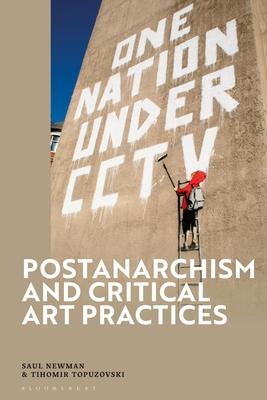
Book
Postanarchism and Critical Art Practices
(Write a Review)
Hardcover
$127.78
Newman and Topuzovski examine here the artistic practices of multiple collectives and individuals deeply engaged with social and political activities such as Grupo de Arte Callejero (GAC) and Voina, arguing that the best way to understand these new critical discourses and practices is through an updated political theory of anarchism - or what we call postanarchism - where the insurrection against power and the politics of singularity are central. Featuring, for instance, an examination of significant movements such as Black Lives Matter, as well as its use of artistic tactics such as graffiti, graphic design and movement art, the book launches itself into a vibrant discussion of the extent to which art can produce a multiplicity of practices through the deconstruction of existing legal, political, and cultural identities.
By developing an alternative way of exploring the nexus between art and politics through the idea of postanarchism, this book bridges the gap between the two, promoting an understanding of the political role that art can play today and introduces a theory of postanarchism to a non-specialist audience of artists, activists and those generally interested in new sites and directions for radical politics.
Newman and Topuzovski examine here the artistic practices of multiple collectives and individuals deeply engaged with social and political activities such as Grupo de Arte Callejero (GAC) and Voina, arguing that the best way to understand these new critical discourses and practices is through an updated political theory of anarchism - or what we call postanarchism - where the insurrection against power and the politics of singularity are central. Featuring, for instance, an examination of significant movements such as Black Lives Matter, as well as its use of artistic tactics such as graffiti, graphic design and movement art, the book launches itself into a vibrant discussion of the extent to which art can produce a multiplicity of practices through the deconstruction of existing legal, political, and cultural identities.
By developing an alternative way of exploring the nexus between art and politics through the idea of postanarchism, this book bridges the gap between the two, promoting an understanding of the political role that art can play today and introduces a theory of postanarchism to a non-specialist audience of artists, activists and those generally interested in new sites and directions for radical politics.
Hardcover
$127.78